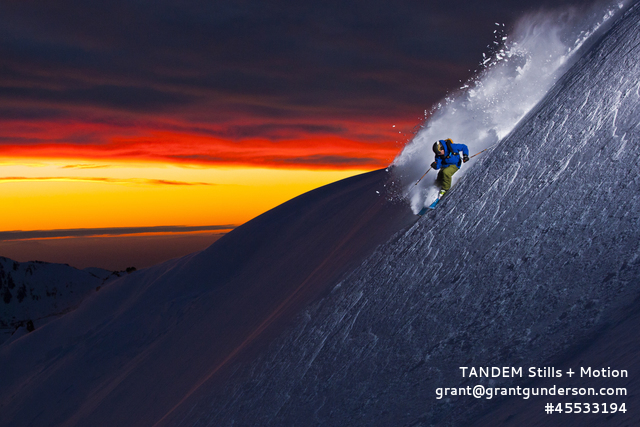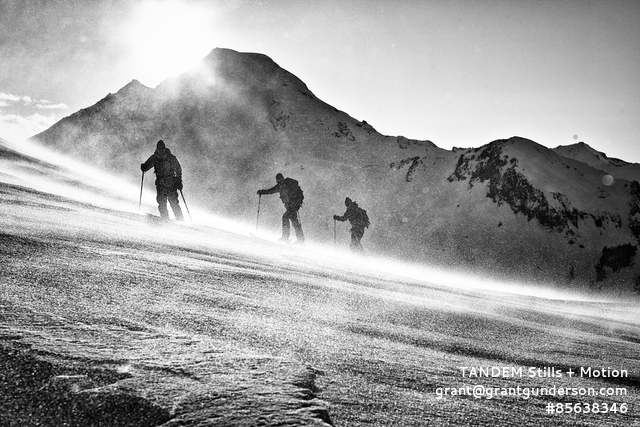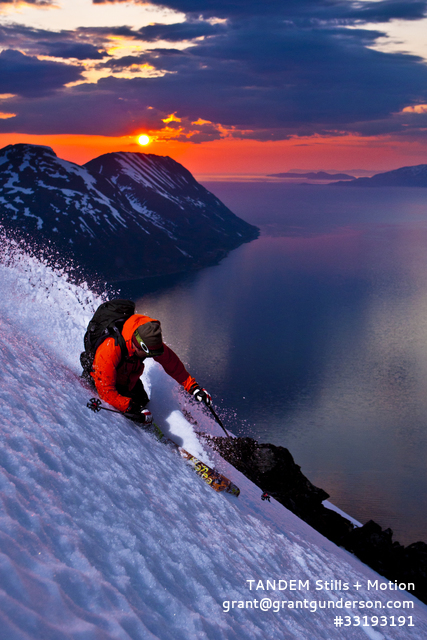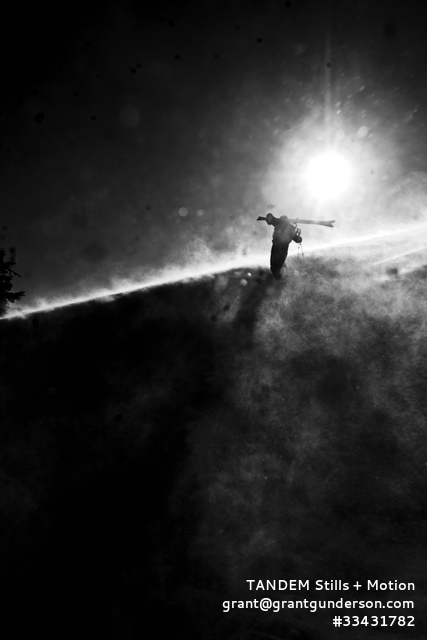1.EDIT-1666.jpg by Katie Purgay
The long exposure of this photo allows the water to have continuous movement, making it appear very soft. This is highlighted by the focused detail of the ice on top of the moving water. The ice stands out because of its clarity, and appears as if it is floating and separate from the fog like water beneath it. I think making this photo black and white was a wise choice because it added an additional contrast between the ice and water, while highlighting the details of the ice.
- IMG_4201.jpg by Shelby Jurewicz
This photo is very compelling to me. I find the dark figures of the bison to draw my eye, while their formation of their straight line moves me from the left side of the frame across to the right. This horizontal movement is highlighted by the strong horizon line that is established. I think it is also a nice touch that the falling snow has been captured, making the moment seem more natural. I also like this photo because it is black and white, which makes the bison stand out and become the focus of the photo.
- YNP-5350.jpg by Nancy Robinson
I think this photo is a strong piece because the highest peak of the mountain is placed well within the frame with consideration of the rule of thirds. The photo is very clear and shows a good depth of field. I think this photo is also unique because the crisp reflection is broken up by the ice, which is not a very common photo. I also like that she chose to leave the branches in the foreground which contributes to developing the 7 layers of the photo. The water is also about 2 shades darker than the sky as it should be.
- edit-0679.jpg by Kris Musser
This photo leads the viewer’s eye into the frame with the rocks on the lower right hand side and the distinct lines created by the snow. The framing of the scene also shows a knowledge of the rule of thirds. The bright blue hues in the photo are very attention grabbing and the whole photo appears to have an appropriate depth of field. I like how the fog helps to define the horizon line.
- sun+set.jpg by Noah Kirui
I really like the subtle pink hues throughout the photo and how they contrast with the green. I wish that an adjustment was made to the aperture to show a greater depth of field. I like the leading lines created by the clear blades of grass in the foreground. The repetition of colors allows for the different layers to to transition smoothly, and a strong horizon line is established. I really enjoy the lines created by the reflection in the water as well.
- EDIT-1580.jpg by Katie Purgay
I was quite amazed by this photo when I first saw it. I was immediately both impressed by its originality and quality. She was able to keep the large feature in focus while capturing the vibrance of the night sky. I also enjoy the strong horizon line created by the dark silhouette of the trees. I also find the glowing green colors in the midground to be very intriguing.
- 208.JPG by Stina Foiles
I really like that the single spiral is the only thing left in focus. The colors are also very vibrant and appealing to the viewer. I think that her settings were spot on to achieve this macro photo. The details of this unique part of nature keep my eye moving about the frame even though it is not all in focus. The branches in the foreground help to establish leading lines.
I like the eerie yet calm feeling this photo gives me. I think it is very impressive that they were able to capture the variations in brightness created by the moon and the the clouds. The moon is quite in focus which i also find impressive. I wish I could be more sure of what settings were used for this photo as I haven’t had much luck when trying to take pictures of the moon myself.
- IMG_2515.jpg by Michael Eggen
I like how abstract this photo is. The blurriness creates a lot of interesting and appealing lines. This is emphasized by the various bright colors. I find the strong and more in focus mountains the be the attention of the photo, as it establishes a strong horizon line.
- IMG_20131026_081210_654.jpg by Michael Eggen
I like the large expanse of sky in this photo. I find the mountains of in the distance to be a nice surprise that really draws the eye through the depth of the frame. There is a lot of nice contrast with the dark and stones in the foreground and the bright sky.



































